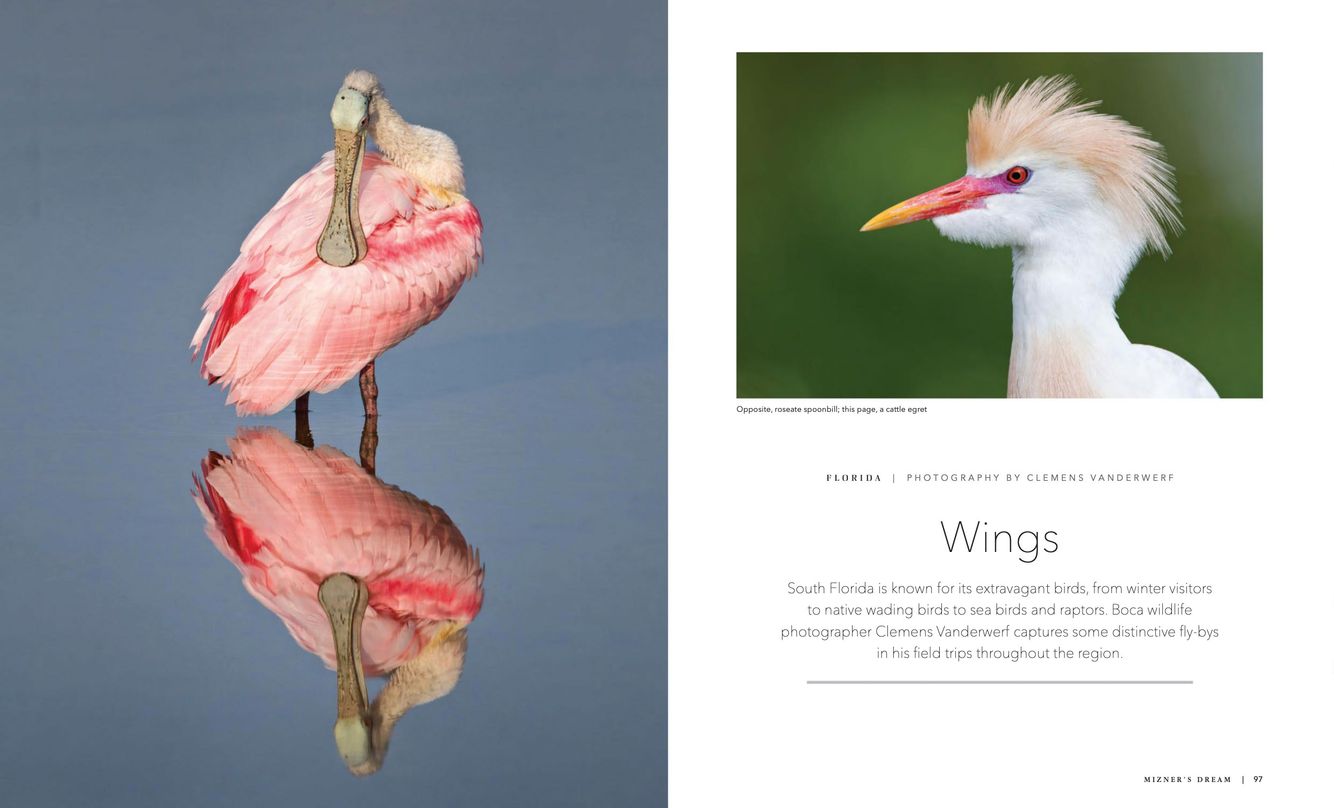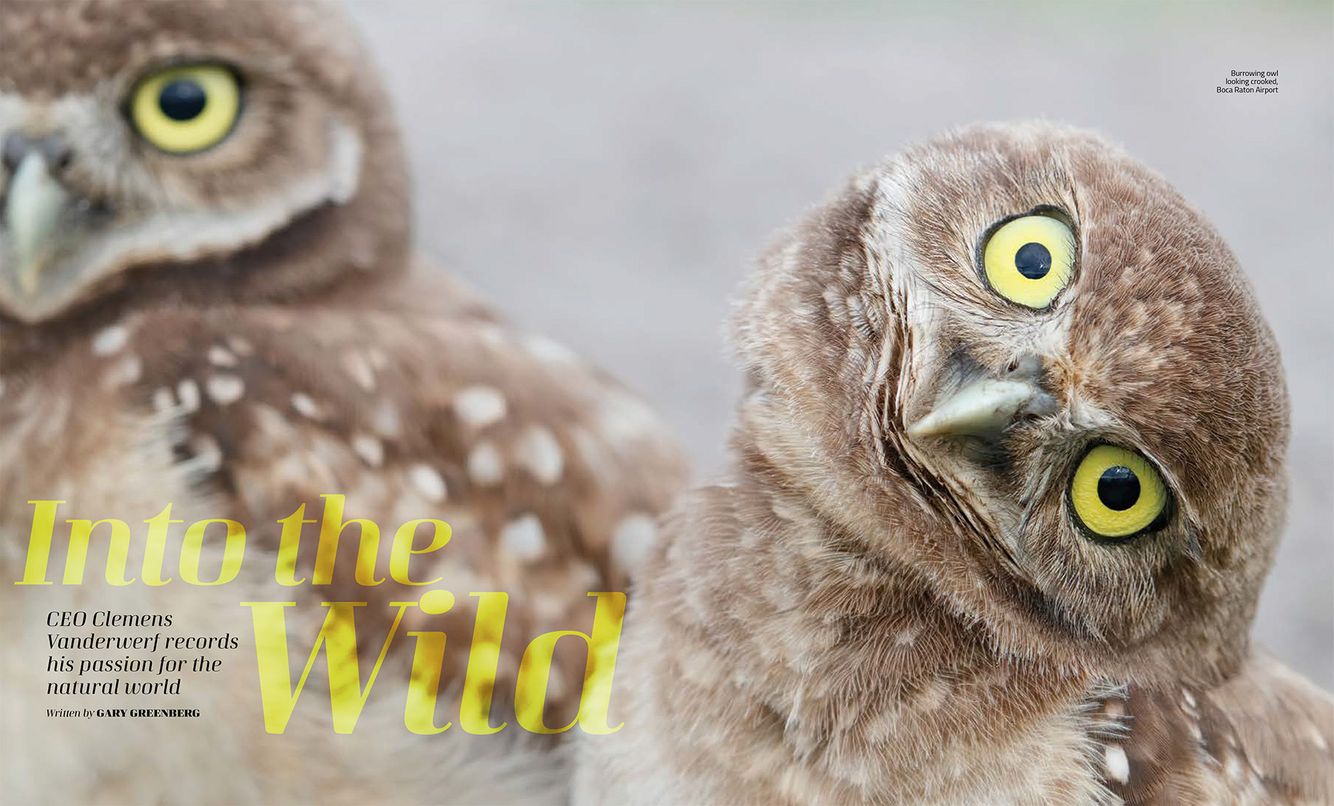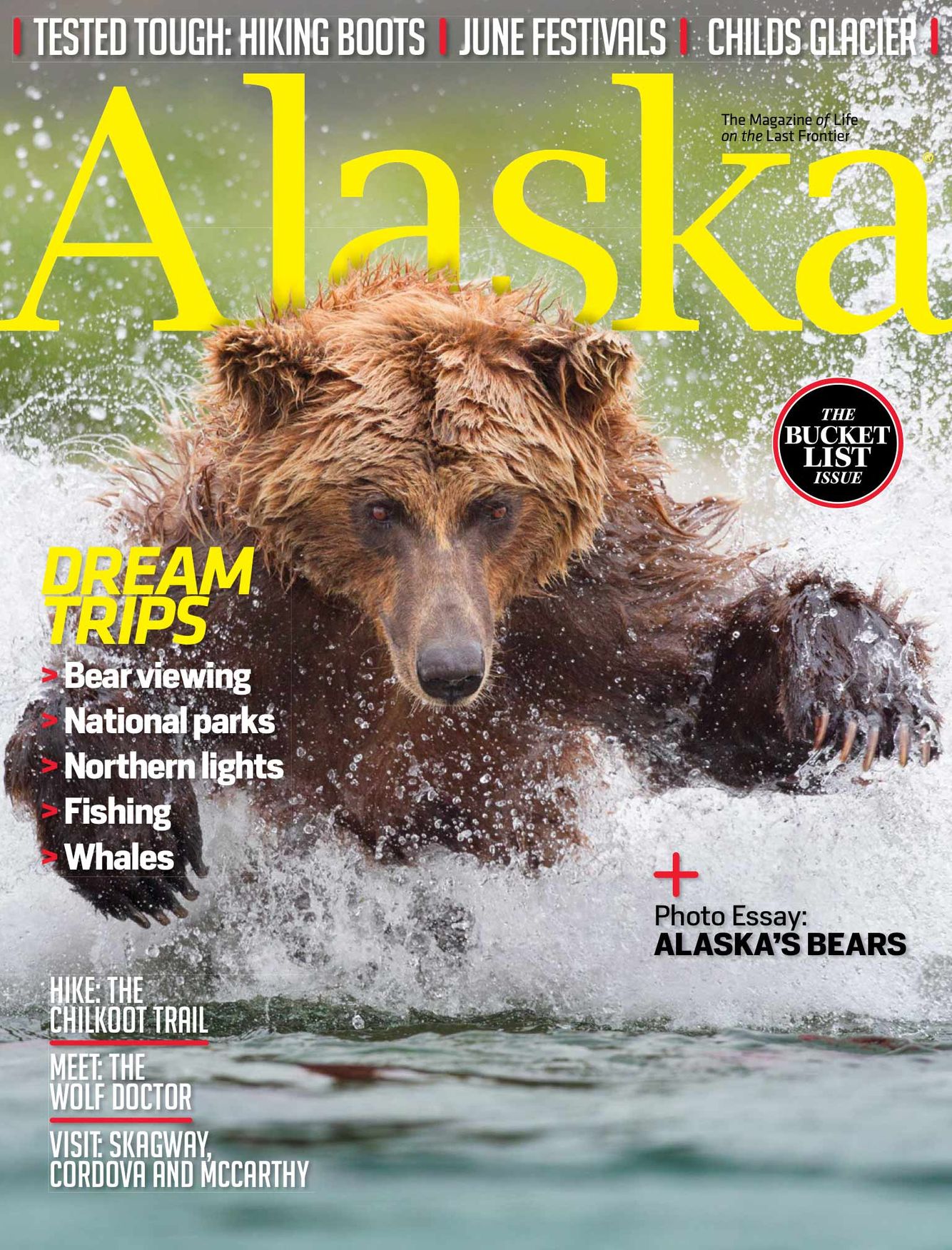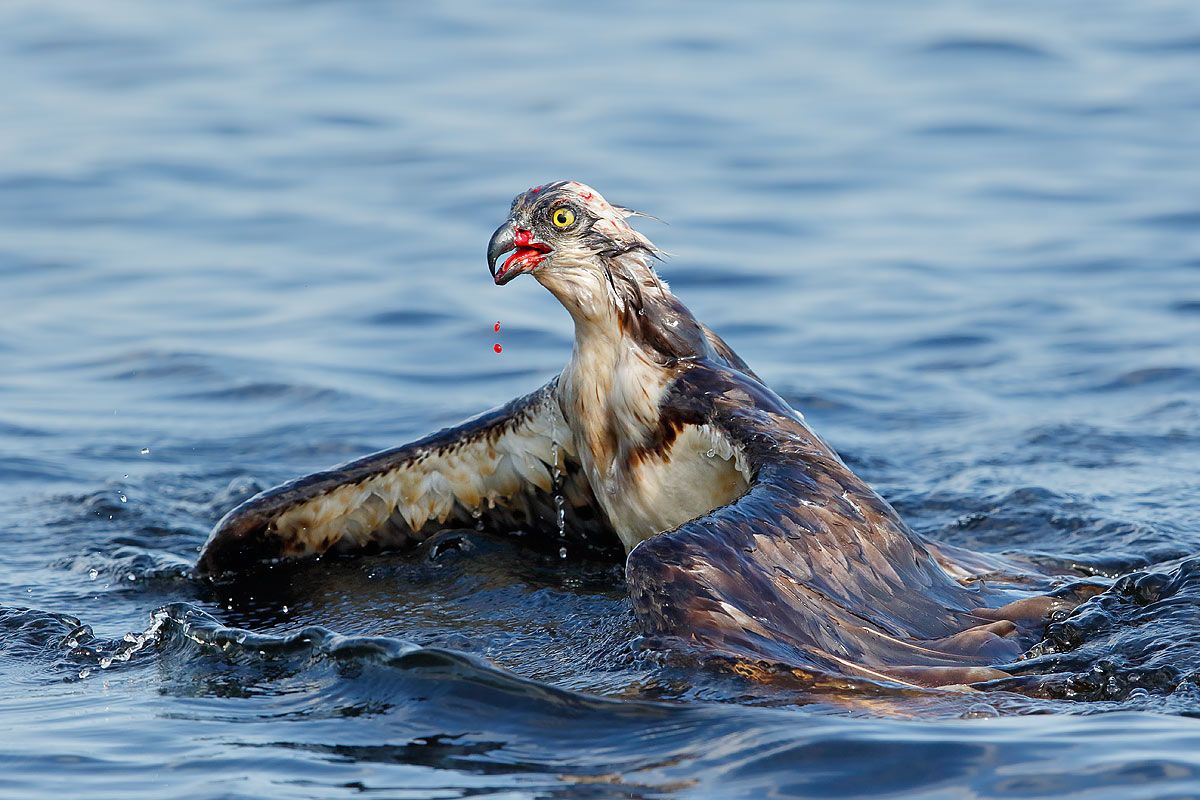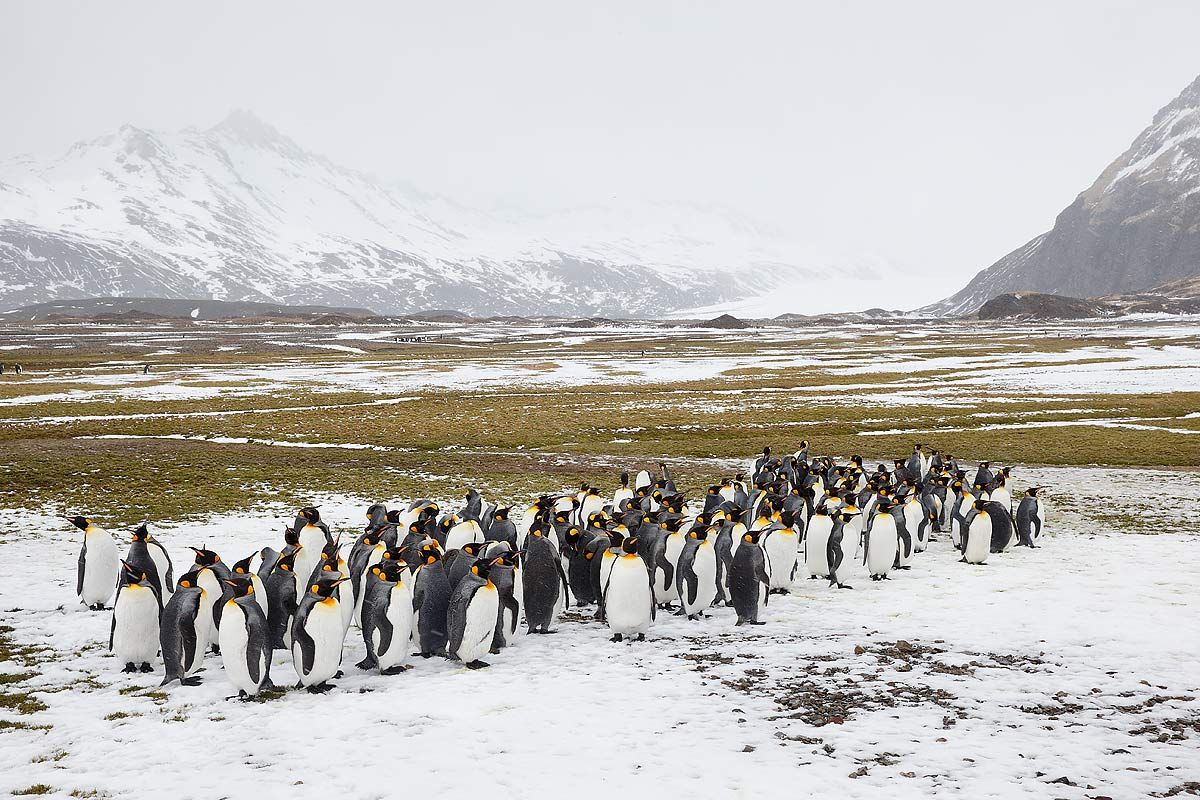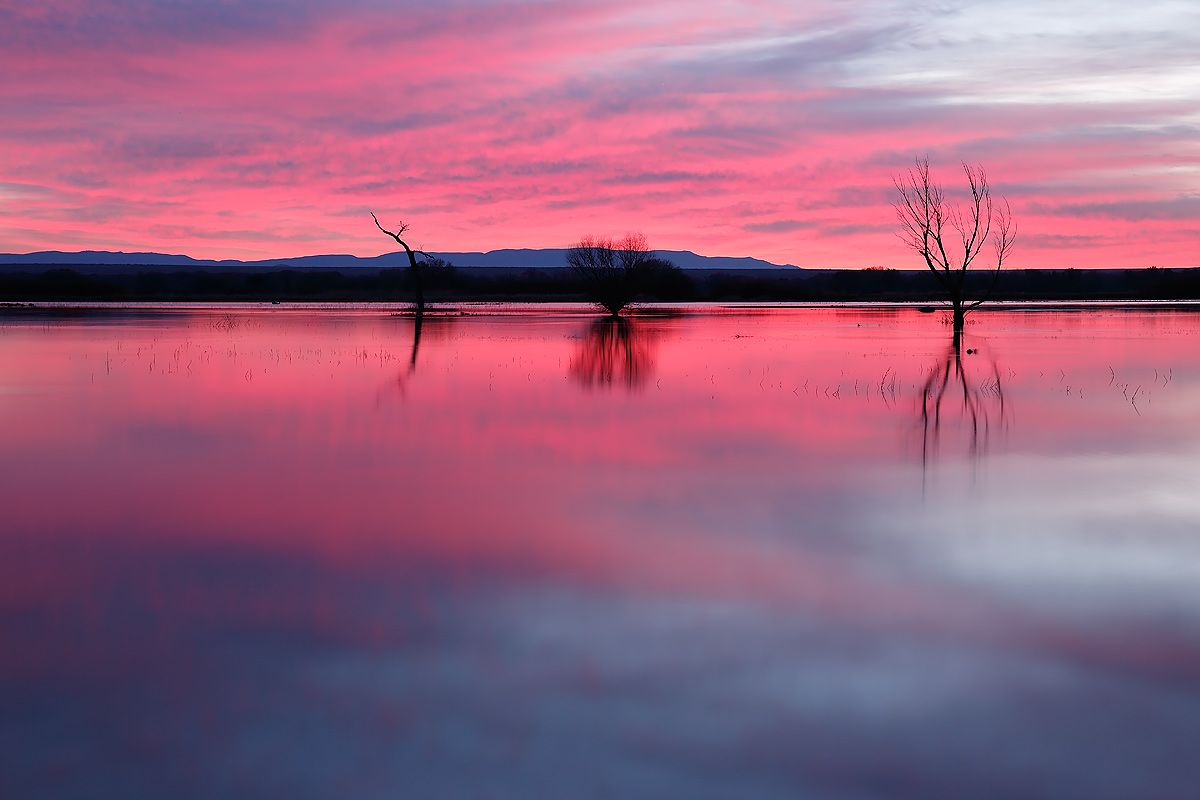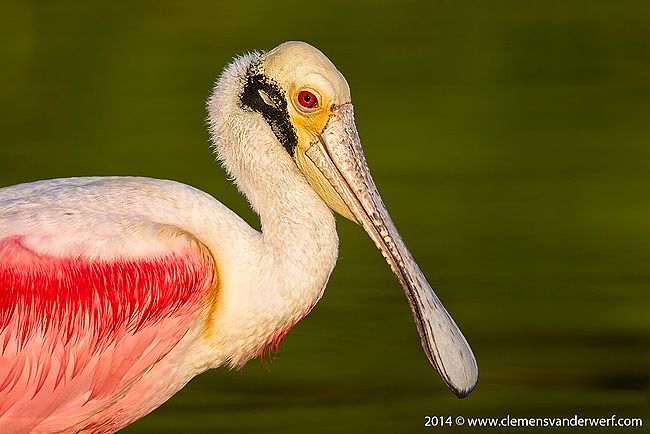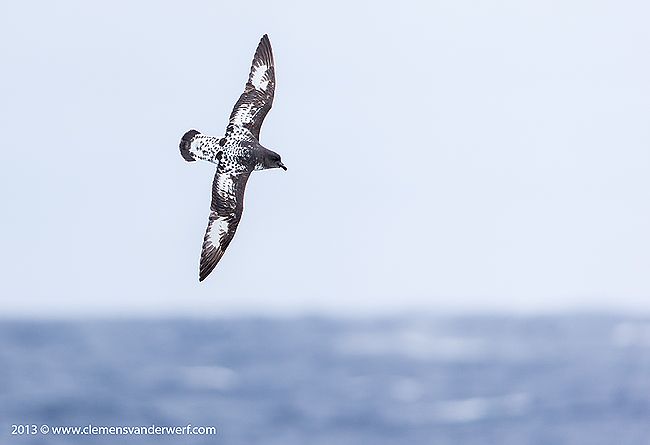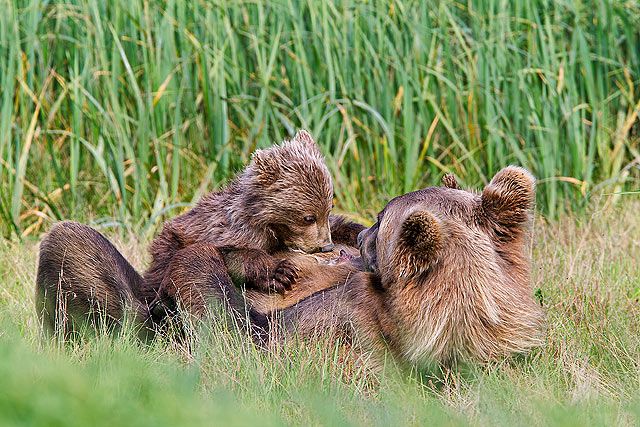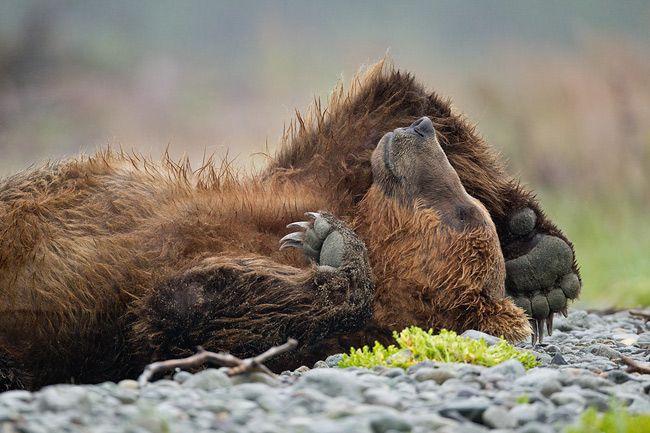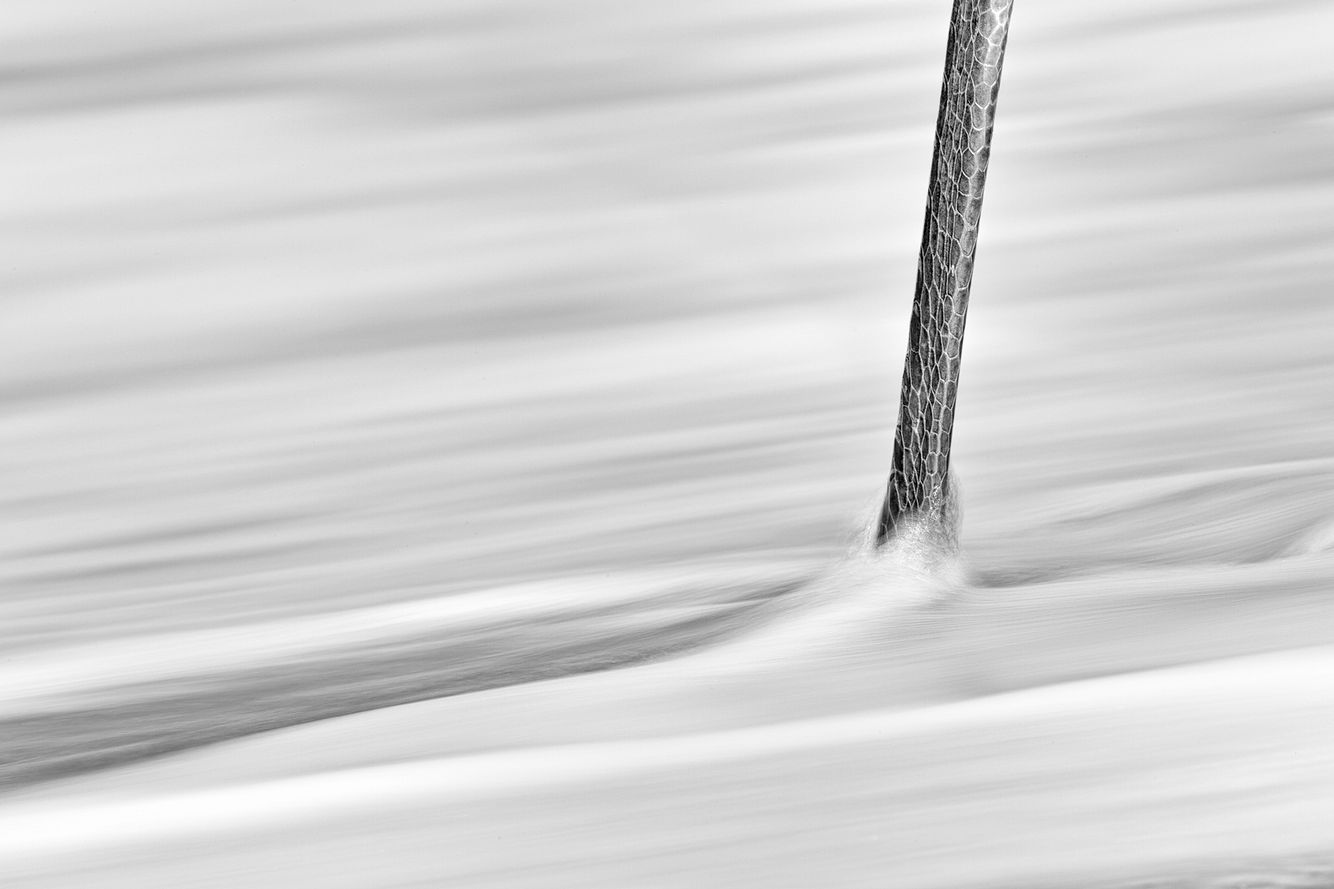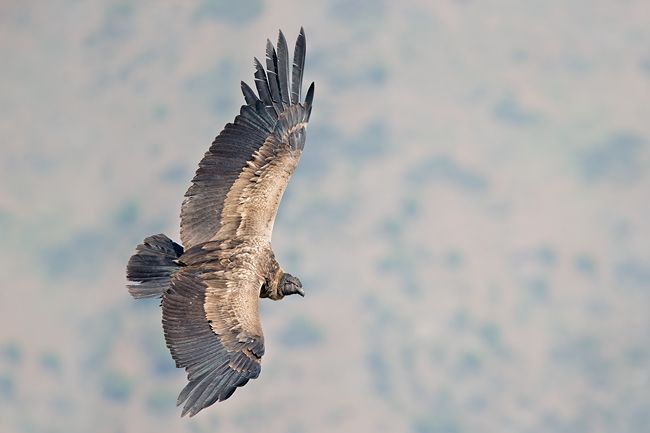Mizner's Dream Magazine 2020
The exclusive Boca Raton Resort & Club in Boca Raton, Florida has featured a photo essay of some of my Florida avian images in their 2020 edition of the Mizner's Dream magazine that is distributed to all the guest and rooms at the Boca Resort. A nice overview of Florida avian wildlife.
moreInto the Wild - Boca Magazine
Boca Magazine featured a nice article about me in there September/October 2018 edition.
Clemens Vanderwerf has two business cards. One is for his job as president and CEO of the charter aircraft company Privaira. The other is for his hobby as a wildlife photographer, a passion that takes him to some of the most remote spots on the planet to shoot pictures of birds, bears and an assortment of other creatures great and small.
A Netherlands native and business administration whiz, Vanderwerf came to Florida while running operations for a shipping company that transported oil rigs and other large equipment. That business got swallowed up by a bigger company, which then spit it out. After plans to finance a management buyout fell through, Vanderwerf went from sea to sky in 2013.
He was hired to turn around struggling Sky Limo Air Charter, which was based at Fort Lauderdale’s Executive Airport. It had been acquired by Noble Capital Markets, a Boca Raton investment company, and was rebranded Privaira after Vanderwerf took the helm.
“I knew nothing about aviation, but there were a lot of similarities with what I’d been doing,” he says. “Both businesses are service-oriented and deal with transportation, logistics and high-end clients. The only difference is Privaira is not on the water; it’s in the air.”
moreAlaska's Bears Photo Essay
Check out the June issue of Alaska magazine on stands now until July. One of my images was chosen for the double-page spread Alaska Exposed-section, and a selection of my brown bear images that I gathered during the years for a photo-essay about Alaska's brown bears.
moreTrouble in Osprey Heaven
Every year during the spring time I visit the resident osprey colony at Lake Blue Cypress a couple of times during breeding season from March until May.
moreKlepto What? ...Kleptoparasitism
Sometimes you are looking at something and it seems to make no sense at all. We all have those moments that we scratch our heads and think: "I don't get it. What is going on here?" It only starts to make sense if you keep looking and try to place yourself in the subject's mind. I had such a moment when I was hip deep standing in the water in Tampa Bay, Florida, observing the weird behavior and interaction of Brown pelicans and Laughing gulls.
moreBald Eagle Fascination
I recently spent a week up in Alaska photographing bald eagles. It was my fourth time photographing the eagles in their natural environment around Kachemak Bay on the Kenai Peninsula, and it never gets boring to see these majestic and powerful birds go about their life in the wild. As a photographer, I like to revisit the same subjects and same locations multiple times to allow me to document a wide variety of images under different circumstances and at different times during the year. No matter if it is the Southern Ocean and Antarctica or a specific animal species, if you want to get a good feel for the subject you need to photograph it more than once under changing conditions.
moreCompeting with nature photography
Since 2012 I have been entering images in major nature photography competitions just for fun to see how my images would hold up against photographers from around the globe. The average quality of the images entered is pretty high, so it is not easy to float to the top in the judging process. The images are judged in different rounds based on image quality, composition, artistic innovation and subject attractiveness. A small selection of the images entered, which could be as high as 20,000 - 40,000 from over 100 different countries, make it into the final round of judging. From this point onwards the judging becomes very subjective as all the images in the final round are great and technically perfect. To win or become highly-honored with an image is quite an achievement, and it also helps to share your images with millions of people around the globe, as a lot of publicity is created by the major competitions with websites, special edition books and magazines and even exhibitions in leading natural history museums. It all creates awareness of what is going on in our natural world and focuses on the beauty of nature in contrast to the ever increasing human footprint and environmental challenges that lay ahead of us.
moreBosque - A special place
It's been a while since I published my last blog post. A change in professional career prevented me from traveling to far away places this year as all the focus was on learning a new business. A business closer to the avian subjects I like to photograph. The medium shifted from water to air as my focus is on building a private aviation company. With the year coming to an end I needed a break and clear my mind. What better place is there than Bosque del Apache NWR in New Mexico. Every year large flocks of birds leave the arctic breeding grounds at the end of the summer and head down south to warmer climates to spend the winter. They are following the same path every year and end up in the same places most of the time, as if they were programmed to do so.
moreColorful and comical pelicans
Pelicans are large birds that do not particularly look special when you see them along the coast. They tend to blend in easily with the coastal environment, and seem to hang out near fishing piers, shipping channels and marinas hoping to snatch up some fish left behind by fisherman. Although they are quite sizable birds, they never really draw much attention while sitting on top of mooring poles near bridges and inlets. They are quite abundant in numbers, which makes it hard to believe that they were severely threatened some decades ago.
The Brown pelican nearly disappeared from the North American landscape during the late 1950s and early 1970s. The abundant use of pesticides that ended up in the food chain nearly wiped out the complete population. In 1970 the brown pelican was added to the endangered species list in the US, which eventually led to a ban on the use of DDT in 1972. Since the mid 1980s the pelican population has increased in numbers again and reached pre-pesticide numbers by the late 1990s. When they were fully delisted in 2009, the Deepwater Horizon oil spill threatened the Gulf Coast pelican populations again. As with many species, human intervention is ultimately responsible for the decline in numbers. It has been estimated that more than 700 adult and immature pelicans die each year in Florida alone from entanglement in sport-fishing gear.
moreLong lens sharpness
When I started photographing birds for the first time in early 2010 I had a full-frame camera body and a Canon EF 300mm/f2.8 IS and EF 500mm/f4 IS MkI lens that I used for sailing photography from a boat or a helicopter. My good friend and nautical photographer Onne Van der Wal (www.vanderwal.com) had taught me to handhold the lenses while photographing from a moving boat. I was not really used to using very long lenses and a tripod to photograph small living subjects like birds. I had followed to blog of Arthur Morris (www.birdsasart.com) for a while and was intrigued by the technical information that was provided. It made me decide to do a workshop with him to improve my photography. I had nothing with birds. To me a bird was a bird, and I could not tell the difference between them. I borrowed the new EF 800mm/5.6 IS lens from Canon and had trouble keeping the subject in the frame or even finding it at all due to the narrow field of view. Working with a tripod was a new feature for me as well. Making sharp images even more difficult. I struggled through the workshop but the long lens changed my perspective on the subject, and got me enthusiastic about birds. I was seeing things that I was never really aware of. Birds are beautiful, and getting a closer look at these incredible creatures changed my view and got my curiosity going.
moreAntarctica - Land of snow and ice
While most of the US is hunkered down under a tremendous arctic freeze that has disrupted large parts of the country, with temperatures and wind chills well in the minus double digits, it seems already a long time ago since I made my recent trip to the southern most continent in the world. In November 2013 I traveled from Miami to Ushuaia in Argentina, to join ice-class expedition vessel Polar Pioneer for a two week expedition to the Antarctic Peninsula. This was my second visit to one of the most stunning and surreal places in the world. Having been to the Antarctic Peninsula in January last year, I wanted to see what it was like to go a couple of months earlier in the season. The January trip, which was during the summer in the southern hemisphere, had been amazing with lots of wildlife and gorgeous color in the sky. Various penguins species were caring for their just born chicks. Seals, whales and other cetaceans where plentiful due to the increase in food sources during the warmer months in the area. The trip in the beginning of November was in the early spring when the continent just woke up out of a brutal cold and dark winter. I wanted to see the difference in landscape and wildlife, which would obvious result in different images. Although the temperature on the Peninsula was around freezing and considered very mild compared to the Arctic Vortex in the US, we had plenty of snow and ice to deal with and the wind chill made it occasionally very cold.
moreOn top of the world
One of the great things about photography of the natural world is the fact that it makes you realize how perfect nature has balanced all the elements. Every little piece has its place in a larger part. If we consider the food chain, which starts of with very small entities, such as krill at sea and little insects on land, and goes all the way to the top where the large predators rule the kingdom. But also the systems that keep the earth moving and provide a consistent habitat for all living species, such as ocean currents, weather systems and temperature zones. Together with the cyclical movements of the planet in the larger solar system, this is the earth we know and live on. Since the last ice age some 20,000 years ago the earth has not encountered any major disruptions, and the last 6,000 - 8,000 years have been pretty stable with respect to the earth's climate. All the elements are in sync with each other or have adapted over the course of thousands of years. All seems totally fine, and on course for the next undisturbed millennia. If you think this is too good to be true, you are right! It isn't. The world is changing, and it is changing very fast.
moreCubs or no cubs
Who does not have a fascination for large mammals with preditoral instincts? The brown bears or grizzlies definitely make this category and are somewhat mythical for their strength, fierceness and size, yet they look as cute as can be. I wanted to experience this seemingly contradicting perception in real life and made my first trip to Katmai National Park and Preserve in Alaska during August 2011. I vividly remember the first evening in Kukak Bay when I came eye-to-eye with a large female brown bear who was fishing in the river for salmon. It made a lasting impression, and got me hooked on the species (Ursus Arctos). I wanted to know more about them and document their behavior with my photography. That first week with the bears along the Katmai coast was great and provided lots of good opportunities. We ended up in Geographic Harbor were the bears continued to fish to gain the necessary weight for the winter hibernation.
moreMore than just a photo
Last year in October I received the news that one of my images became Highly Honored in the Windland Smith Rice International Awards. I could not be more proud to have made the final cut of more than 20,000 images entered in one of the major nature photography competitions. In today's world with very good equipment available to a lot of photographers, it is an even more daunting task to distinguish yourself from the very high quality images made by many great photographers.
moreDealing with challenging conditions
Every trade has its own specifics, and this applies also to photography, or wildlife photography to be more precise. To get things right you need to have the photographic skills to create the best possible image under the given circumstances. Unique behavior usually happens within seconds, and if you miss the opportunity you might not get a second chance. You have to stay focussed and alert, and try to anticipate the behavior of your subjects to get the results you are looking for. You have to manage everything correctly that is under your own influence, such as exposure, composition (framing), equipment (choice of lenses), etc. In most cases this by itself is already difficult enough, let alone if you add the environmental conditions that mother nature throws at you once in a while.
moreAmazing Antarctica
If there is one place in the world where I would love to go, it would be Antarctica. The fascination has to do with heroic expeditions of the past, the enormous amounts of ice and isolation. Nobody really lives in Antarctica and it is difficult to get to, which leaves it rather unspoiled. Since my interest in photography gained traction over the last couple of years, a visit to Antarctica ended up higher on my “bucket list”. When the opportunity presented it self to join an in-depth expedition to the white continent organized by Cheeseman’s, I could not resist and jumped on the opportunity to fill the last bunk on board the ship. And boy, did I not regret that!
Here are some impressive facts: Antarctica is the coldest, driest, highest and windiest continent on earth. Its total land area is about 1.5 times the size of the United States including Alaska. In the winter the land area of Antarctica increases about 2.5 times in size due to pack ice. About 90 percent of the world’s ice and snow are located in Antarctica. Antarctica’s surrounding Southern Ocean ecosystem is the largest and most fertile in the world, and is equivalent to 10 percent of the world’s oceans, and extends from the Antarctic continent to the Antarctic Convergence, the boundary where northward-moving, cold Antarctic water meets southward-flowing, warm sub-antarctic water from the Atlantic, Pacific, and Indian oceans. The Antarctic circumpolar current — the West Wind Drift — transports more water than any other system in the world’s oceans. The sheer richness of the eco-system is staggering.
morePhoto competitions in 2012
As I only started with serious photography in early 2010, and got inspired by Arthur Morris, I thought it would take a long time to develop an image portfolio that was somehow decent enough to compete in photo competitions. So, I really never thought I would sent in any images to the prestigious competitions such as Veolia's BBC Wildlife Photographer of the Year and Nature's Best, or any competition for that matter. But, early this year I said to myself "why not", let's see what happens.
I entered in three competitions: Veolia's BBC Wildlife Photographer of the Year, Nature's Best and the Birds-As-Art 1st International Bird photography competition. To my surprise I did really well in the Birds-As-Art 1st International Bird photography competition with a total of 8 images in the finals for the different categories. I had the pleasure of winning the "Pleasing Blurs" category with an image of the leg of a Great Blue Heron standing in the sand with the water flowing by. Later in the year I got a message from Nature's Best that two of my images had made the final round of judging. I was very pleased that one of the images of a Coastal Brown Bear became finalist and a "Highly Honored Winner" in the Animal Antics category.
moreSouth Georgia and The Falklands 2012
The human footprint has an ever-increasing impact on our natural environment, and if you look around, you do not get the impression that we as human’s care one bit about the environment we live in. There are still a couple of places in the world, which are not spoiled by human intervention, at least not yet. Those places are usually very remote and difficult to get to.
A couple of years ago my friend and Canon Explorer of Light photographer, Onne Van der Wal, told me about his voyage on board a private sailing yacht “Shaman” to South Georgia Islands and Antarctica. I looked at his images of rough landscapes and wildlife, and got fascinated by the remoteness and sheer beauty of the place. I made it my goal to explore and photograph South Georgia and Antarctica myself one day, before it looses its uniqueness as a result of too much human intervention.
This past October I joined an expedition organized by Cheeseman’s Ecology Safaris to the Southern Ocean with an extended itinerary to the South Georgia Islands and the Falkland Islands.
South Georgia was discovered in the seventeen century by Captain Cook who claimed the land for King George III, and became a whaling and sealing station until the early nineteen sixties, when active whaling was abandoned. The island is uninhabited apart from a handful of British researchers of the British Antarctic Survey, who live year round at King Edward Point base at the old whaling station of Grytviken. Large populations of wildlife live on the island and in the surrounding seas, and use the island as their main breeding area. Various species of penguins, seabirds and seals call South Georgia their home in the vast remoteness of the Southern Ocean. Unfortunately, whales are not seen so often in the waters around South Georgia, due to the intensive whaling past.
more
